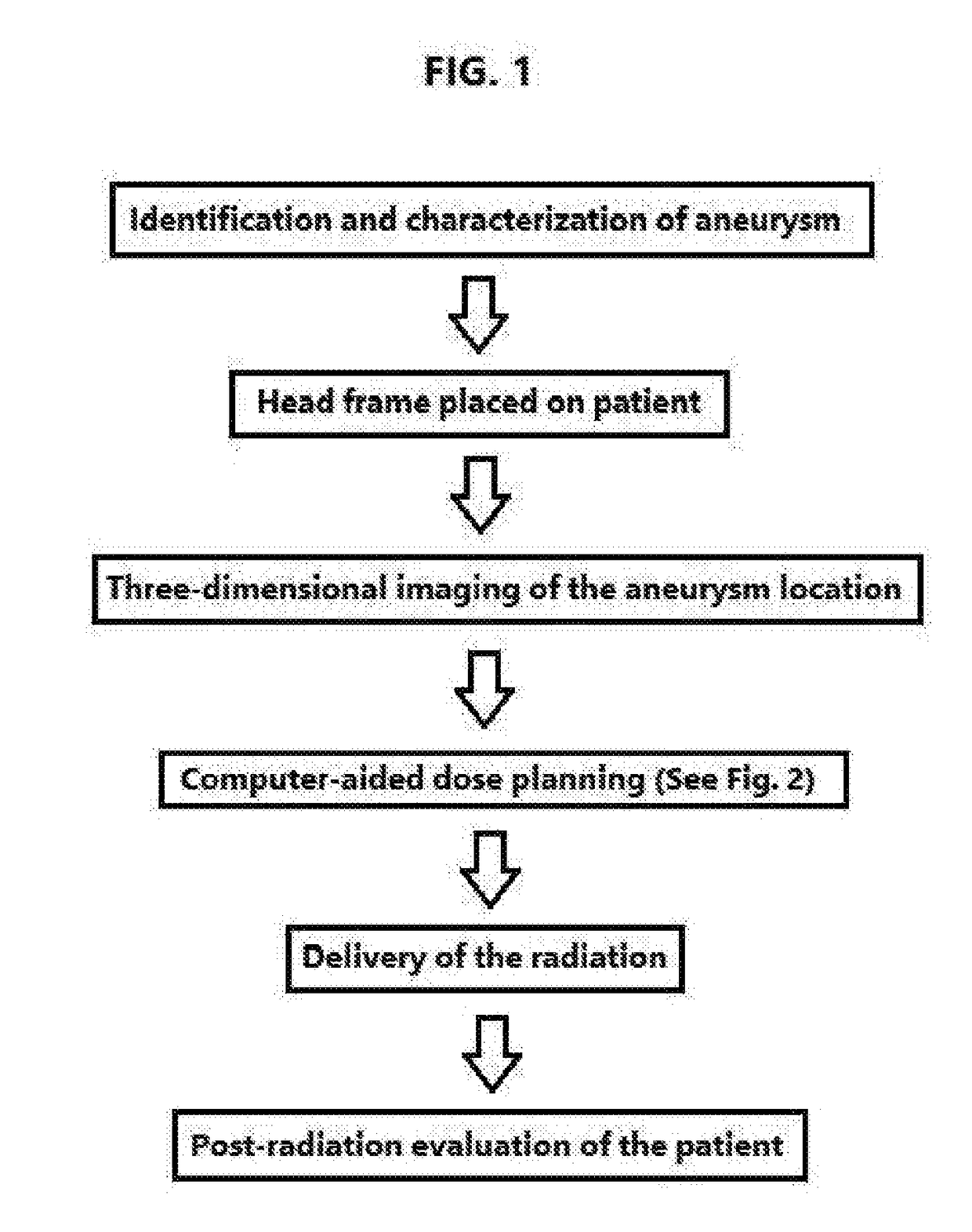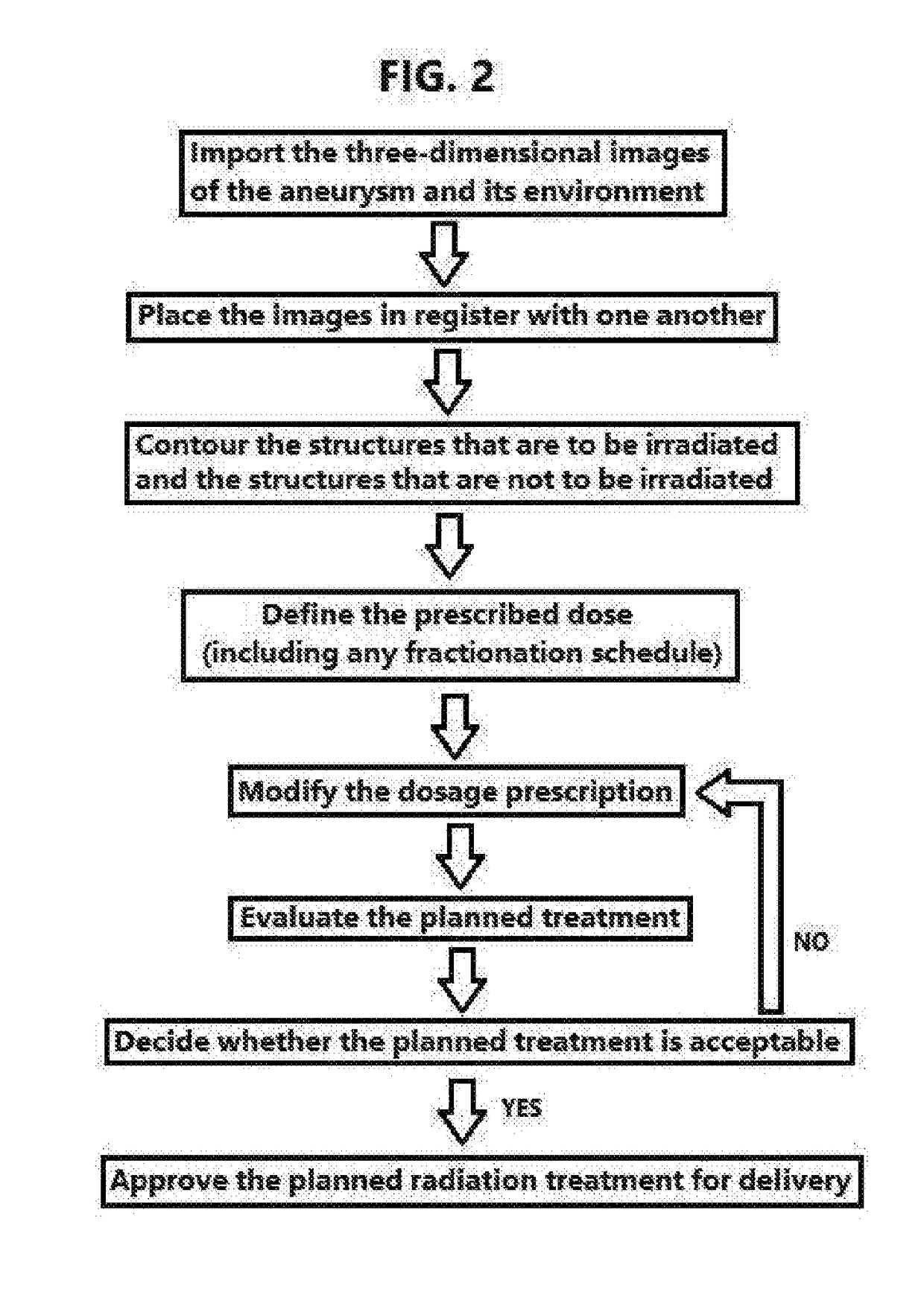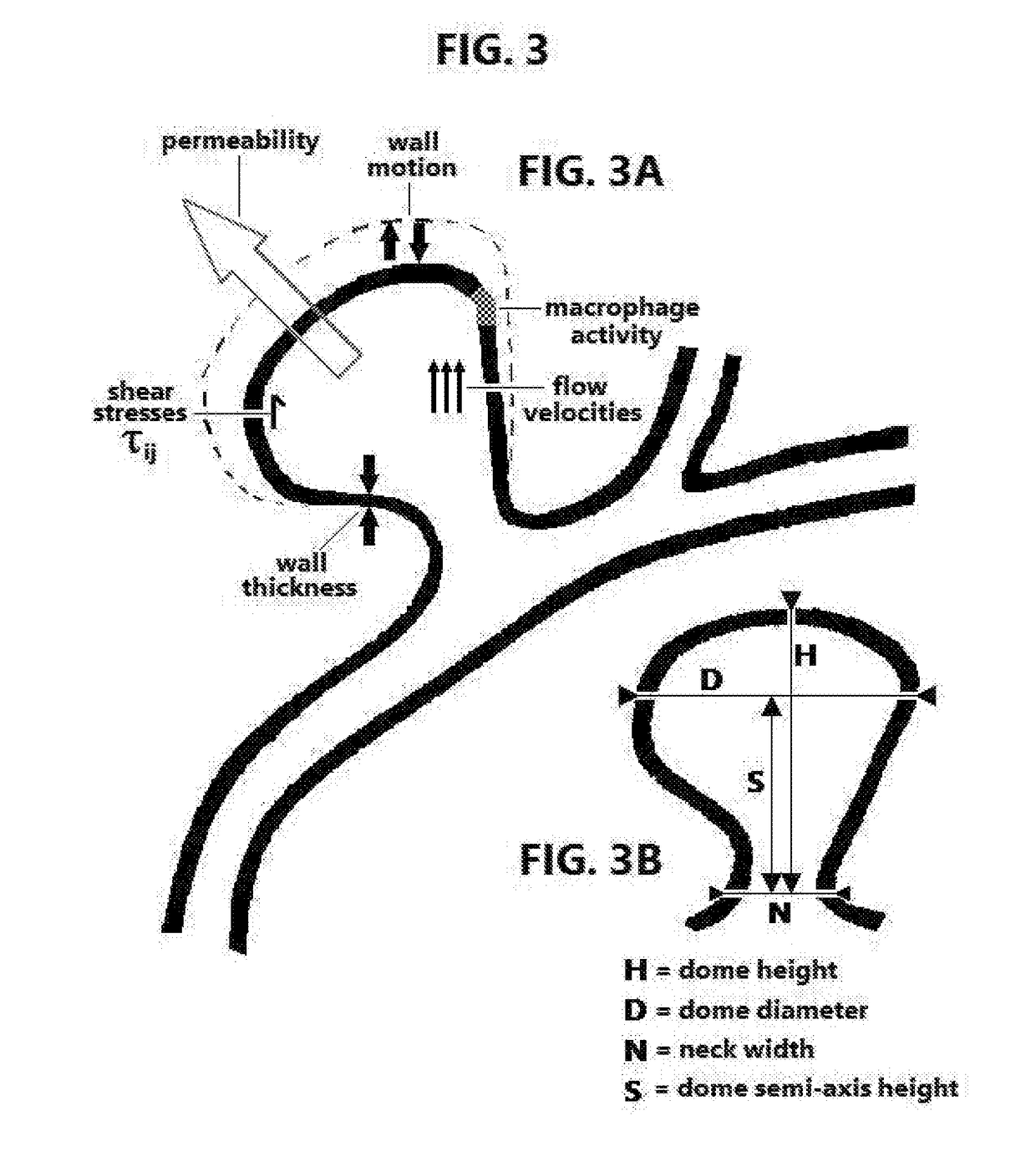Treatment of unruptured saccular intracranial aneurysms using stereotactic radiosurgery
a saccular and radiosurgery technology, applied in the field of intracranial aneurysm treatment, can solve the problems of high risk of rebleeding, high risk of surgical repair of ruptured aneurysms in the posterior intracranial circulation, and high risk of ruptured aneurysms, so as to prevent recurrence, facilitate clot formation, and promote neointimal proliferation and recruitment
- Summary
- Abstract
- Description
- Claims
- Application Information
AI Technical Summary
Benefits of technology
Problems solved by technology
Method used
Image
Examples
Embodiment Construction
[0041]Three types of radiosurgical devices have been used for stereotactic radiosurgery (SRS)—the Gamma Knife (Elekta, Sweden); Linear Accelerator (LINAC) devices such as the Cyberknife (Accuray, Sunnyvale, Calif.), Novalis Tx™ (BrainLab, Germany), Xknife™ (Integra, New Jersey), and Axesse™ (Elekta, Sweden), (among others); and proton beam devices. Because the Gamma Knife is the oldest and arguably best known such device, the description of the invention that follows presumes that it makes use of the Gamma Knife, but without endorsing its use over other SRS devices. To give a specific embodiment of the invention, the specific radiosurgical equipment could comprise a Gamma Knife, stereotactic frame, and planning software, respectively, as follows: Leksell Gamma Knife® Perfexion™ (Catalog No. 715000), Leksell® Coordinate Frame G (Catalog No. 1006442), and Leksell GammaPlan® for Perfexion™ (Catalog No. 1006938), along with accessories for stereotactic radiosurgery that are described in...
PUM
 Login to View More
Login to View More Abstract
Description
Claims
Application Information
 Login to View More
Login to View More - R&D
- Intellectual Property
- Life Sciences
- Materials
- Tech Scout
- Unparalleled Data Quality
- Higher Quality Content
- 60% Fewer Hallucinations
Browse by: Latest US Patents, China's latest patents, Technical Efficacy Thesaurus, Application Domain, Technology Topic, Popular Technical Reports.
© 2025 PatSnap. All rights reserved.Legal|Privacy policy|Modern Slavery Act Transparency Statement|Sitemap|About US| Contact US: help@patsnap.com



